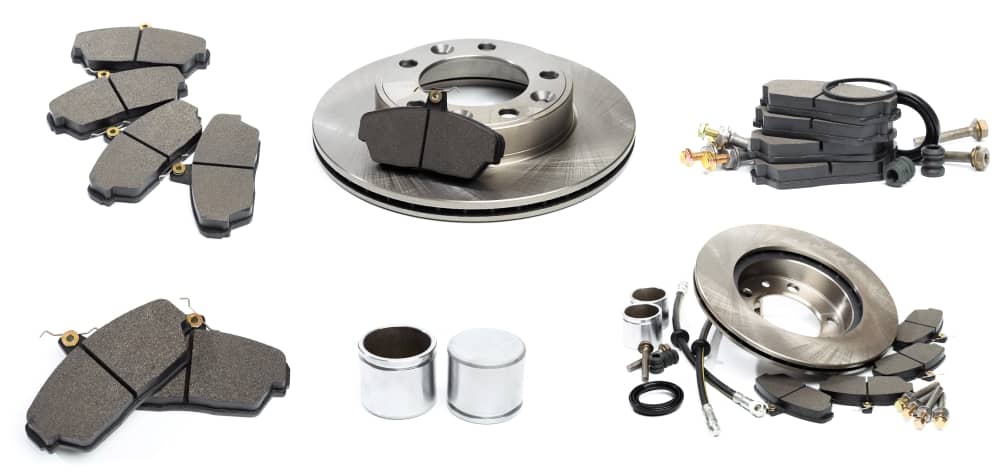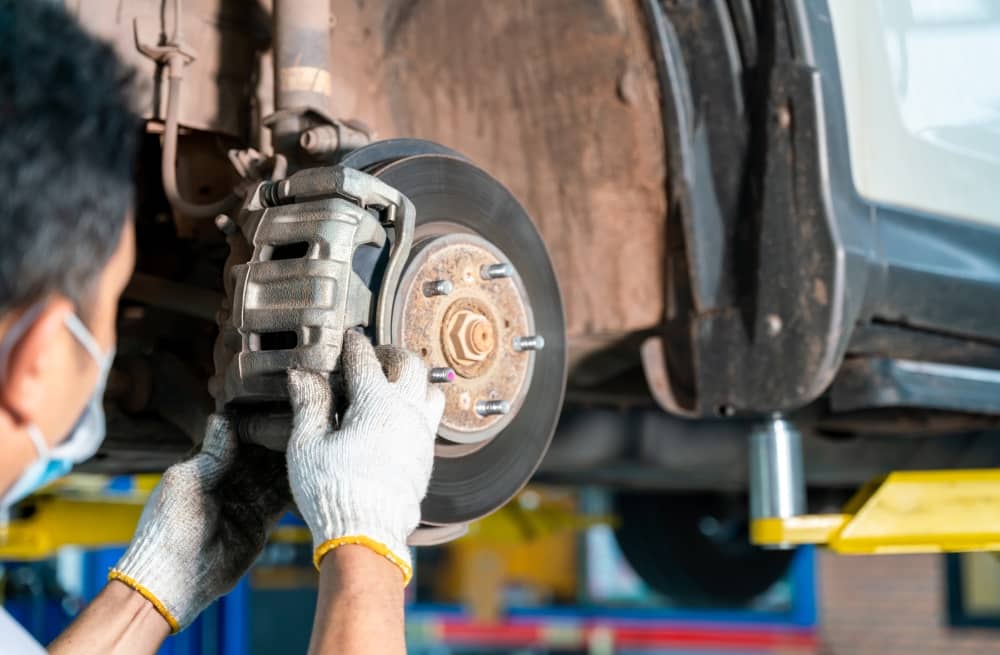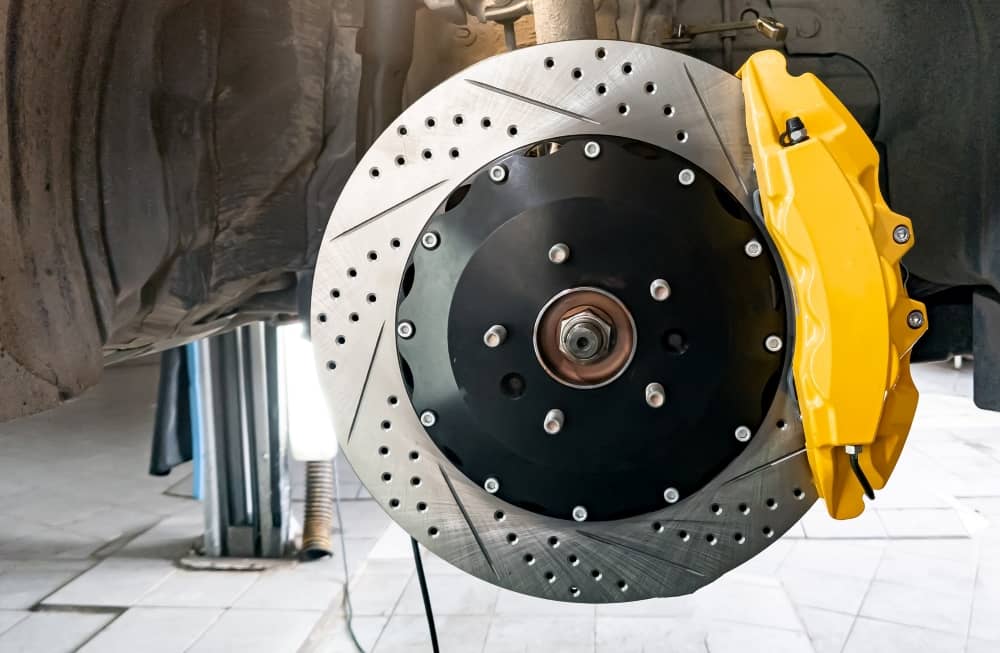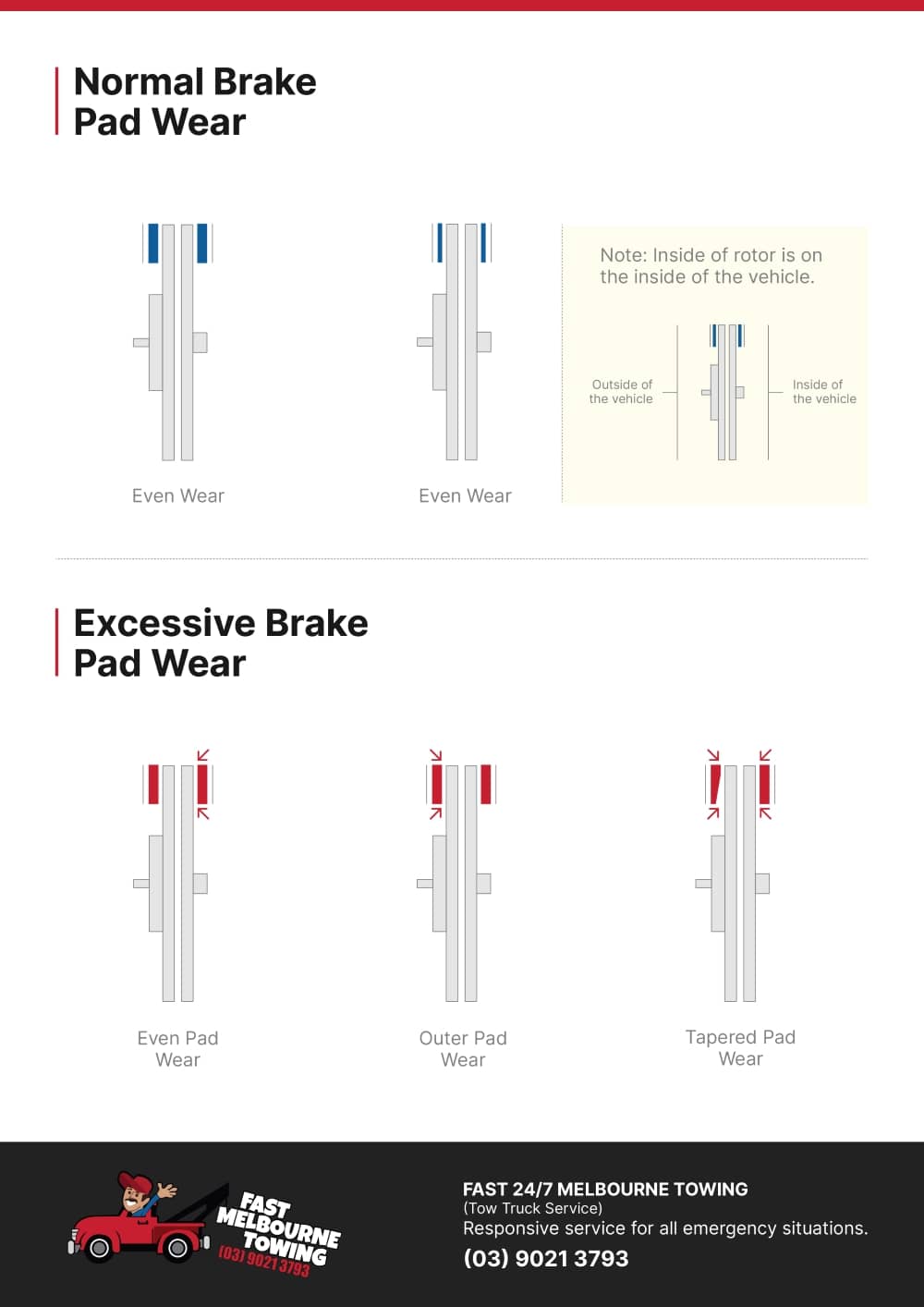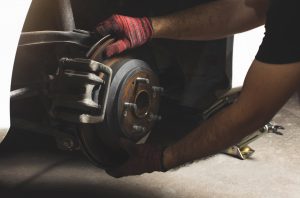The following is an informative blog post giving you all the information you need to know about checking brake pads. Firstly, it will discuss brake pads and other legal requirements, such as age restrictions. Secondly, it will cover how to check your brake pads and where you can find guidelines regarding this process. Finally, we will discuss when should your brake pads be replaced and why they should be replaced. You mustn’t delay the replacement of your brake pad, which can lead to further damage or injury.
Always remember to keep your car safe, legal, and roadworthy.
What Are Brake Pads?
As the name suggests, brake pads are a component of your vehicle that allows pressure to be applied to the brake disks and is a significant component of your vehicle’s braking system. Brake pads are found on all vehicles, and the design and location vary from vehicle to vehicle.
As your car stops, the brake pads bring the vehicle to a halt by slowing or stopping the rotation of the wheels. Brake pads can be made from different materials. However, they all serve the same purpose of bringing your car to a stop. Have you ever noticed how loud your foot breaks can be? This is due to brake pads compressing and creating friction between two surfaces which causes them to heat up. Brake pads are typically made from a combination of copper, carbon, and ceramic materials.
The job of brake pads is to absorb the heat created by the friction, preventing damage to the discs and keeping them in good condition. Not only do they protect your brake discs, but they also save you money by increasing the life of your braking system. Brake pads are also responsible for slowing your vehicle down in rainy conditions due to the resistance created by the water on the braking surfaces.
Worn Out Brake Pads
If your vehicle’s brakes become worn out or need replacement, you must take them to your nearest motor vehicle service centre. Failure to do so could result in further damage to your braking system and an accident, as you could hit another car or pedestrian, increasing the risk of injury.
How to Check Your Brake Pads
1. Pull the rubber boot at the top of your brake pads and remove them. Gently press on the brake disc while pushing the vehicle forward to see if there is excessive play, which signifies that you need new brake pads. If there is excessive play, it means that your brake discs are worn out and need to be replaced as well.
2. Disc brake pads are usually screwed onto the brake discs and are usually found in pairs. The pad on each side of your disc is typically locked into place with a set screw. However, they can be unlocked if you have a manual transmission vehicle.
3. There may be a pressure plate under the brake pads, which sits between the brakes and the callipers (where your wheel takes its stopping power). Ensure that this pressure plate is not warped or cracked, as this would be a warning sign for more severe damage.
4. When you press the brake pad with your fingers, it should feel firm and smooth, not squishy, and have little resistance to pressure. If your brake pads are worn out, there will be plenty of play in the pad, which you can feel when you press on it with your fingers.
How Soon Should You Replace Your Brake Pads?
After you have checked your brake pads, it is essential to replace them as soon as possible. As mentioned in the previous section, excessive play means that your brake discs are worn out and need to be replaced. Worn-out brake pads can also cause damage to your wheel hub.
It is possible to replace your brake pads when worn out. However, you will need to replace them simultaneously as replacing your brake discs. You can ask your mechanic to fit new brake pads for those who want to save money and reduce the risk of an accident. You must ask for these services as this will ensure that your braking system is working correctly.
What Are the Most Common Causes of Brake Pad Wear Out?
Brake pads wear out when they can no longer apply the required pressure to slow down or stop your vehicle. If you have been driving on roads with a high level of grit, you will notice that your brake pads are worn out. Grit in your brakes can cause high friction levels, leading to excessive wear and tear on your brake pads, causing you to replace them.
You must maintain good brake pad condition. You can prevent brake pad wear by washing your car regularly and trying to avoid roads with heavy grit. You should also ensure that your brakes are frequently inspected to ensure that all systems are working correctly. If you feel any vibrations or hear high-pitched sounds when braking, you must immediately take your vehicle in for a check-up.
What Are the Differences Between Front and Rear Brake Pads?
Although brake pads are typically the same, there are a few differences between the front and rear. Front brakes are located on the front of your vehicle, while rear brakes can be found under the bumper at the back of your vehicle. Front brakes are commonly used to slow down or stop your car, while rear brakes are used when you turn left or right.
Additionally, you will notice a different rim type on the front and rear brakes. Rear brakes have a disc brake, while front brakes use hydraulics (kind of like a tilt tray tow truck). If you have an automatic transmission vehicle, these differences will not usually matter as the wheel performed the same overall action regardless of which pad was fitted.
How Can I Save Money on Brake Pads?
There are many ways that you can save money on brake pads by yourself or by asking your mechanic to replace them for you.
- Firstly, ensuring that you have a kit or a spare brake for your vehicle is essential. This will assist you with an emergency if your brakes are not working correctly and you need to replace your brake pads.
- Secondly, it is essential to find out the exact type of brake pads that you will require before purchasing your new ones. Some vehicle owners may purchase used parts to reduce the cost of replacing the brake pads. However, you must ensure that the brakes are serviced or replaced by a professional, as this will help to minimize the risk of brake failures.
- Thirdly, you can save money on brake pads by maintaining your vehicle and ensuring that they are functioning correctly. This includes inspecting your brakes regularly, repairing any damage, and ensuring that all components are in good working order. It is important to remember that poor maintenance reduces your chances of being able to stop in time when driving.
- Lastly, you can replace your brake pads yourself if you are confident enough to do so. It is essential to ensure that the brake pads you purchase are genuine; this is the best method for providing that you install new brake pads correctly. You should also ensure that the installation instructions are followed precisely, and if in doubt, ask a mechanic to help you out with the installation.
Can I Replace My Brake Pads on My Own?
If you are confident that you can replace your brake pads, such as if they are worn out, you can. However, you must be careful and avoid any major accidents. If you do not know how to replace brake pads yourself, it is also recommended that you take your vehicle to a mechanic as soon as possible to ensure that your brakes remain safe while driving.
There are many different types of brake pads available on the market today. These are usually available in kits and come with tools that will assist you in doing the job quickly and easily. You will require one or two master cylinders, hydraulic brake fluid, and brake pads for your vehicle.
How to Install Brake Pads?
Replacing brake pads is very easy. However, you must follow safety procedures when doing so. Ensure that the vehicle is parked on a firm surface and that you have enough space to work around the vehicle. You should also ensure that you have appropriate protection on your hands, as there could be some oil spills when replacing the brake pads.
Remember to wear sturdy gloves and safety goggles, and work carefully when replacing broken parts or components. The first step is to jack up your car; this will put your car onto its wheels so you can remove the wheel on at least one side of the vehicle. Ensure that you wear the proper protection and use tools before doing any work on your vehicle. You must always follow the instructions of your car owner’s manual carefully when replacing parts on your vehicle, especially when removing wheels and discs.
You should ensure adequate space around the vehicle for you to work within. The brake pads have an internal depth measurement marked on each pad and the manufacturer’s instructions for installing your new brake pads. Ensure you remove the brake pad closest to your vehicle’s centre first. This will allow you more working space when replacing your brake pads.
The next step is to release the brake calliper on your vehicle, ensuring it is free and not trapped when replacing the brake pads. The calliper is usually located at or near the rear of your wheels and can be released by pressing down on it while simultaneously lifting the calliper itself. This can be removed quickly by pushing down on a small pin located inside the calliper.
After removing the calliper, you should remove any brake pad testing against your disc to make room for the new ones. You can now install the remaining brake pads and your callipers with a new brake pad. Ensure all bolts that secure each part are carefully tightened after replacing brake pads.

